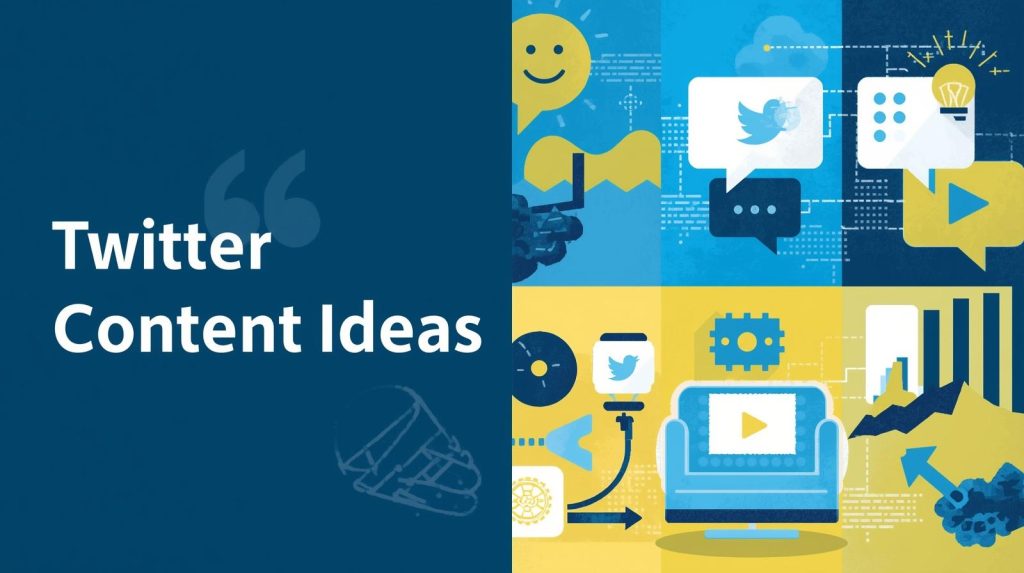In the fast-paced world of social media, Twitter remains one of the most powerful platforms for brands, creators, and marketers. But with the constant flow of tweets and trends, posting without a strategy can easily make your efforts go unnoticed.
A well-defined Twitter content strategy helps you know what to post and when, ensuring that every tweet serves a purpose—whether it’s driving engagement, awareness, or conversions. Let’s dive into how to create a results-driven Twitter content plan for 2025.
Why a Twitter Content Strategy Matters
Twitter is more than just a place for short updates — it’s a platform where conversations shape brands, communities, and trends. Having a structured strategy helps you:
- Stay consistent with your brand messaging
- Post at times when your audience is most active
- Boost engagement through relevant and valuable content
- Improve visibility in Twitter’s algorithm
Without a clear plan, your tweets can get lost in the noise. A strategy ensures every post contributes to your overall marketing goals.
Understanding Your Audience
Before deciding what to post, you need to understand who you’re talking to.
Use Twitter Analytics to explore:
- Demographics: Age, gender, location
- Interests: Topics they follow or engage with
- Behavior patterns: When they’re most active online
This data helps tailor your tone, topics, and posting schedule. For instance, a B2B audience might prefer thought leadership content during weekdays, while a B2C brand could focus on entertainment and product updates in the evenings or weekends.
Types of Content to Post on Twitter
Your content mix determines how well you engage your audience. The key is to diversify — not every tweet should promote your product.
Here’s what works best:
1. Text Tweets
Short, punchy, and impactful — perfect for quick thoughts, hot takes, or quotes.
Example: “Success on Twitter isn’t about going viral; it’s about staying consistent.”
2. Images & GIFs
Visuals grab attention in crowded feeds. Use product photos, infographics, or memes that reflect your brand personality.
3. Videos & Reels
Short videos perform exceptionally well for storytelling, tutorials, or product launches. Keep them under 45 seconds for maximum engagement.
4. Polls & Questions
Boost interaction by asking followers for opinions or feedback.
Example: “Which type of content do you engage with most — Threads, Polls, or Videos?”
5. Threads
Perfect for storytelling or educational content. Break down complex ideas or share a mini-guide.
6. User-Generated Content (UGC)
Showcase real experiences from your customers. This builds trust and social proof.
7. News & Trends
Stay relevant by sharing updates from your niche or commenting on trending topics with the right hashtags.
(Pro Tip: Track performance by content type to see which formats drive the most engagement.)
When to Post on Twitter
Posting the right content at the wrong time can cost you engagement. Timing plays a big role in visibility.
Best Times to Post (2025 insights):
- Weekdays: 9 AM – 12 PM (for professionals and B2B content)
- Evenings: 7 PM – 10 PM (for general audience engagement)
- Weekends: 10 AM – 1 PM (for lifestyle or entertainment content)
Use Twitter Analytics or tools like SocialPilot, Buffer, or Hootsuite to identify when your followers are most active.
Pro Tip: Schedule tweets consistently throughout the week instead of dumping multiple posts in one day.
How to Maintain a Consistent Posting Schedule
Consistency helps build recognition and trust. Here’s how to stay on track:
- Create a Twitter Content Calendar: Plan tweets for the week/month in advance.
- Balance your content mix:
- 40% Educational/Informative
- 30% Engaging/Community-focused
- 20% Promotional
- 10% Personal or behind-the-scenes
- Use Scheduling Tools: Automate posting using tools like SocialPilot, Buffer, or TweetDeck.
- Leverage Tagembed: Embed your live Twitter feed on your website to showcase activity and boost engagement beyond Twitter.
Pro Tips to Optimize Your Twitter Content Strategy
- Use trending hashtags wisely: Stick to 1–2 relevant ones per tweet.
- Engage with replies and mentions: Twitter rewards active participation.
- Repurpose top-performing tweets: Turn popular threads into visuals or blog snippets.
- Monitor analytics monthly: Identify what’s working and refine accordingly.
- Collaborate with influencers: Expand reach through shared audiences.
Common Mistakes to Avoid
- Posting too often or not often enough
- Ignoring analytics and feedback
- Being inconsistent with your tone or branding
- Overusing hashtags or tagging irrelevant accounts
- Not responding to comments or DMs
How to Track Success
Measure what matters most:
| Metric | What It Means | Why It Matters |
|---|---|---|
| Engagement Rate | Likes, replies, retweets per impression | Shows audience interest |
| Impressions | How many people saw your tweet | Reflects reach |
| Click-Through Rate (CTR) | Link clicks per tweet | Indicates content relevance |
| Follower Growth | Net new followers | Tracks audience expansion |
Use Twitter Analytics or third-party tools to monitor performance and adjust your strategy regularly.
Conclusion
An effective Twitter content strategy blends creativity with data. Knowing what to post and when to post helps you stay visible, relevant, and engaging in an ever-changing algorithm.
Keep experimenting with content formats, timing, and messaging — and remember, consistency beats virality.

